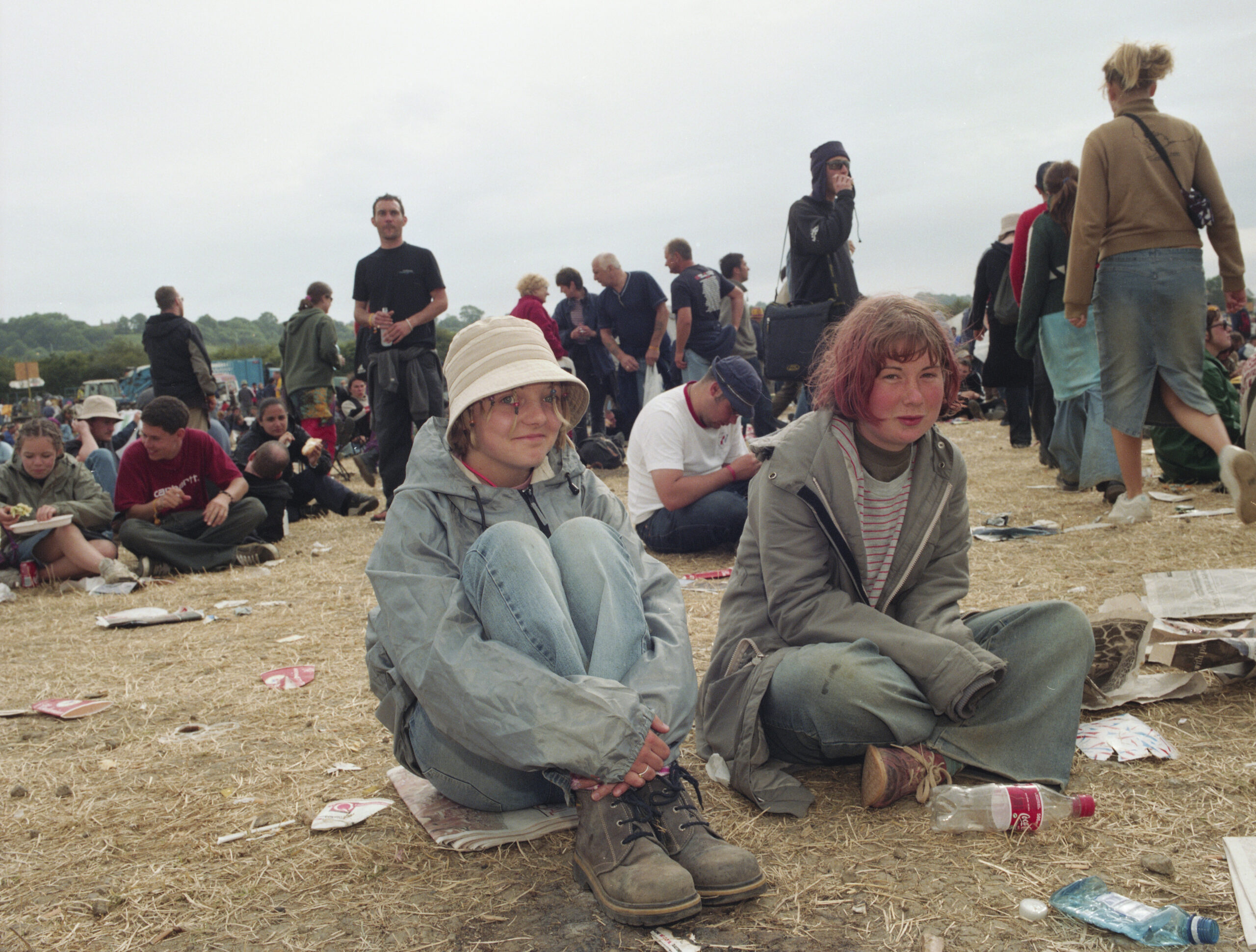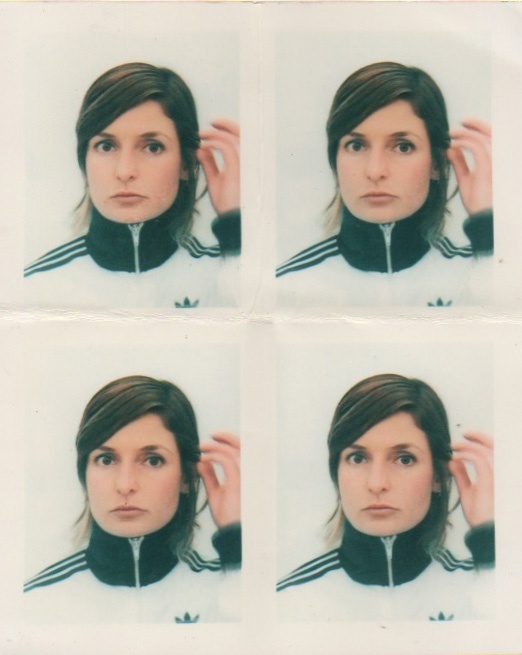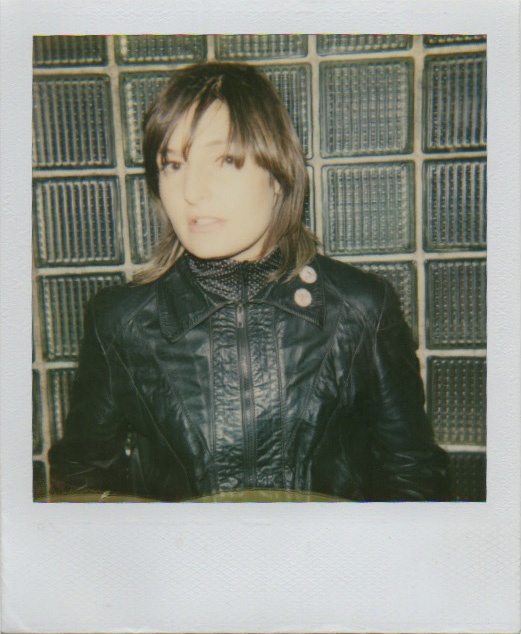

long nights and longer days with rebecca lewis
Interview by Esta Maffrett | 08.07.22
Rebecca Lewis' archive is an insight into late 90s and early 00s British youth tribes navigating the many styles and sounds that were on offer. Her work takes you from Hoxton to Ibiza through sound of metal to mods.
" When I was racking my brains trying to think of something really artsy to do for my final degree, my tutors were like ‘what is this you’re photographing? It looks really interesting’. To me it was just my daily sort of scene and life outside of college, I just saw it as the Mod scene, nothing special there." Always interested in taking portraits of people and exploring the everyday characters Rebecca found herself falling into music photography through her passion for the Northern Soul and Mod scene.
An invitation into the everyday and many nights that make up being young, hanging with mates and moving as a tribe to the perfect sound that lights you up. Her pictures explore many of the memories that we often forget but deserve to be treasured.


How did you get into photography?
When I was pretty young, about 9 years old. My elder brother was into it, I think he did go to college to study it at A level and he got me into it. He set up a little dark room in his bedroom and I was just fascinated, I was like that’s what I want to do. So that’s where the spark started.
I grew up in the Isles of Scilly off Cornwall and so it was quite limited there. There was one local well known photographer and I went to see him, he was sweet to support me and my decision and sort of helped me a little bit. But it wasn’t until I got off the island around 15/16 years old that I went and did an A level, so I really couldn’t do much with it until then apart from look at what my brother was doing. I started with an A Level and then went into the National Diploma at Falmouth and that was their first year of doing one in photography. I just kept doing courses basically, really enjoying the learning and then when I went to Bournemouth I lost my way a little so dropped out for a bit and then went to London with my degree.
What did you like photographing at first?
It was all portraits, all people and very much about characters. When I did my A Level I used to go to this little roadside Cafe called The Little Chef and photograph people coming in and out, straight portraits like I later did with my mods. Most of my work actually is just like the straight up portraits, I was really inspired by people like Diane Arbus and others who took straight up, sort of awkward character shots. There’s so much information just in looking at their faces, looking at the way they dress, their identity or how they hold themselves.
How did you get into photographing music and did it follow your own musical interests or was it just a job?
I was massively into the music and the mod scene, growing up in the Isles of Scilly there was no music scene, all we got that was contemporary was the radio. There were no record stores, nothing, there were tiny tiny little youth group gatherings but that was it. So there was no fashion or music scene there and I missed that. By the time I was in my mid 20s when I was going to school in London I discovered the Mods, I thought ‘wow’ this music is amazing, the scene was cool and there were some awesome clubs. I had my camera on me because I was on the course and I was just photographing everything I saw, I had no intention of it but it ended up being my final project. When I was racking my brains trying to think of something really artsy to do for my final degree, my tutors were like ‘what is this you’re photographing? It looks really interesting’. To me it was just my daily sort of scene and life outside of college, I just saw it as the Mod scene, nothing special there. But they were like no, this is special to everybody else, so I took my camera out and set up portraits in clubs and that was the beginning. It launched me into exhibitions because I got noticed and then I started working for The Face magazine and ID which continued into other magazines. I got sent to festivals like Ozzfest which wasn’t really my thing at all, I got sent to all these different music and youth culture scenes to document them. So it all started with Mods and Northern Soul, that was my thing.
(At the Mod nights) quite often i’d set up in the corner of a club with this one light. I would shoot my straight up portraits more at the beginning of the evening when everybody was fine and then again halfway through the evening when everyone was really sweaty. Between that i’d be dancing with the 35mm camera, so portraits on a medium format and then 35mm every now and again to run around taking photos and having a dance.
There were festivals where It was just work but then you see the people and you see some of the characters and they’re so into it so they love having their photos taken. That’s the thing when you dress up and show off your pride and your identity, you enjoy having someone take your photo so it made my life easier as a photographer and it wasn’t like I was having to really work hard to get people to ask for a photo. Only thing was I would look completely different from them because whatever my style was at the time I would be standing out like a sore thumb but then at least you’re kind of hiding behind your camera.
"That’s the thing when you dress up and show off your pride and your identity, you enjoy having someone take your photo so it made my life easier as a photographer and it wasn’t like I was having to really work hard to get people to ask for a photo."

Did you find youth culture had more differences or similarities as you moved around?
I didn’t really go that far afield but I imagine although the scene is similar it’s just smaller in certain places and maybe there is a different take on it in different areas. But I think whatever people saw in magazines everybody tried to kind of fit to that. It’s part of your tribe, something in a moment of time and then a lot of people don’t stay doing the same thing.
What was the relationship between you and your subjects when you would shoot?
Well it would be depending on if it was for a sort of photo documentary or a magazine, so if they would know that I was coming in and spending a day and a night or something with them. There was one which was quite crazy where I went and hung out with this kid that went clubbing with his mum. I think I stayed with them in their house which was an interesting documentary, it was all a bit messy. So there were times where you do literally get involved with the whole thing but others, like at a roller rink, I chose to do as my own little mini projects. Just going there on weekends and hanging out with people, when you have a camera they’re curious and you seem to get a rapport with people quite easily when you show an interest and an appreciation for what they’re doing.
With the Mod scene, I was just with people all the time and they got it. But sometimes people were happy to see me without my camera because they could get wasted without my flash in their face, so sometimes I had to learn where the line was drawn.
What was the Ibiza party scene like when you would shoot out there?
The party scenes were crazy. I think no way did I have the maturity at the time when I was sent on some of these commissions and I mean maybe nobody else did because it all seemed very messy. You were lucky if you came back with some good shots. I think I was sent to Ibiza five times in one year for different magazines which of course was crazy. It was amazing getting sent to all the best parties and free entry to the clubs but then you’ve got to remember to come back with photos.
Finally… If you could put any object into the Museum of Youth Culture what would it be and why?
It would be something from my Mod and Northern Soul era so I guess a Northern Soul 7 inch record. Because that’s the thing that really made me feel alive was dancing to Northern Soul. That or my Northern Soul shoes, nice and slippery, perfect for spinning.











